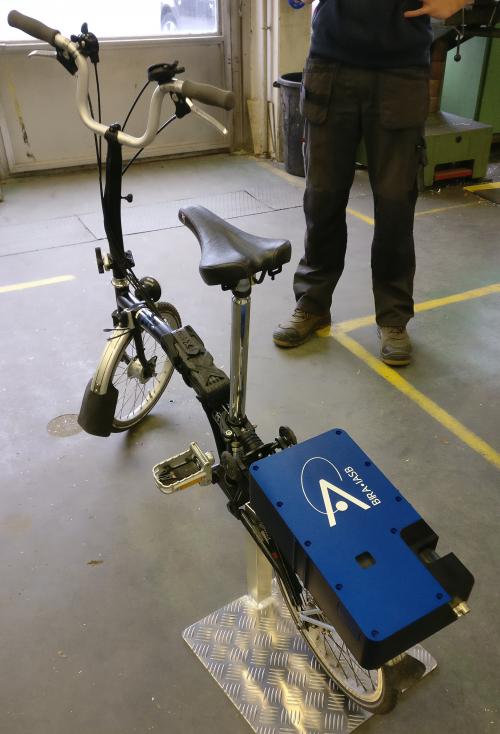Monitoring the composition of the (polluted) troposphere, the layer of the atmosphere we live in, has become a key topic in Earth observation from space. The Sentinel-5P satellite is the latest endeavour of ESA in this field. Scientists of BIRA-IASB are heavily involved in data processing from TROPOMI, the only instrument on board this spacecraft. Measurements from orbit can only be reliably interpreted if in-parallel ground-based validation measurements are performed. Networks with Differential Optical Absorption Spectrometers (DOAS) are being set up for this purpose worldwide. So why not tie a DOAS to the back of your bike and “sniff” the air while you ride?
TROPOMI
TROPOMI (TROPOspheric Monitoring Instrument) is a Dutch instrument on board ESA’s Sentinel-5 Precursor satellite (fig.2) that was placed in orbit in October 2017. Its main target is to localize pollution and monitor its composition. BIRA-IASB is involved in the data processing of the TROPOMI instrument, and in particular sulphur dioxide (SO2), formaldehyde (HCHO) and ozone (O3) algorithm development and validation.
In parallel to the flight of TROPOMI, ESA has organized the CINDI-2 campaign to test and inter-compare a wide range of MAX-DOAS (Multi Axis DOAS) and other DOAS-type instruments. In a next step, the ESA FRM4DOAS project has set up an operational system to process MAX-DOAS data from NDACC (Network for the Detection of Atmospheric Composition Change) for validation of S-5P products.
BIRA-IASB is involved with its own MAX-DOAS but uses also a mobile-DOAS operated from a car. What you can measure from a car, you can also measure from a bike. From this straightforward reasoning the Bike-DOAS experiment was born.
Bike-DOAS
In a stationary MAX-DOAS a scanning mechanism is used to allow differential absorption measurements. A mobile DOAS is smaller and more light-weight by definition, and has no scanner. It records scattered light from two directions, zenith and 30° off-axis. It is extremely appropriate for measuring the chemical composition (e.g. NO2) of the lower troposphere.
The mechanical Engineering division of BIRA-IASB designed and manufactured a mechanical structure (fig.3) that houses:
- the spectrometer
- a micro-computer
- a GPS for geo-localization of the measured data
- an optical entrance system
- a battery
The design is very robust, supporting shocks and vibration, and is usable in different weather conditions. The main material is aluminum that has been surface treated and coated for better resistance against corrosion. Nevertheless, the box has a manual shutter that permits the biker to close the spectrometer and protect the entrance mirror and optics in case of rain.
The Bike-DOAS box is easily and securely mountable on the luggage rack of any bike (fig.4). A simple command button is installed on the box allowing to switch on and off the DOAS at any time.
The Bike-DOAS computer can be remotely accessed by a tablet or smartphone which allows the operator to keep track of the measurements and instrument health.



